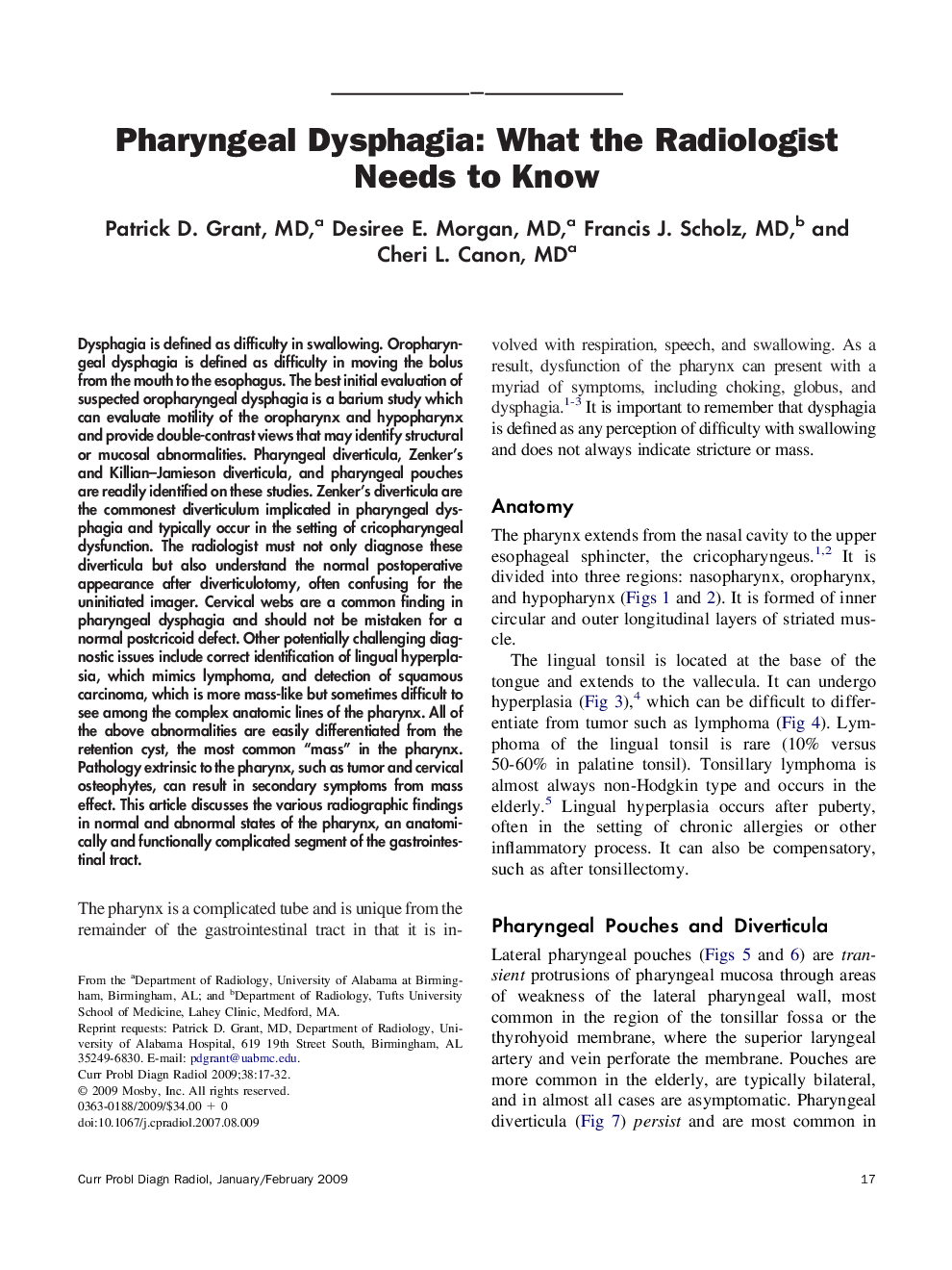| Article ID | Journal | Published Year | Pages | File Type |
|---|---|---|---|---|
| 4223720 | Current Problems in Diagnostic Radiology | 2009 | 16 Pages |
Dysphagia is defined as difficulty in swallowing. Oropharyngeal dysphagia is defined as difficulty in moving the bolus from the mouth to the esophagus. The best initial evaluation of suspected oropharyngeal dysphagia is a barium study which can evaluate motility of the oropharynx and hypopharynx and provide double-contrast views that may identify structural or mucosal abnormalities. Pharyngeal diverticula, Zenker's and Killian–Jamieson diverticula, and pharyngeal pouches are readily identified on these studies. Zenker's diverticula are the commonest diverticulum implicated in pharyngeal dysphagia and typically occur in the setting of cricopharyngeal dysfunction. The radiologist must not only diagnose these diverticula but also understand the normal postoperative appearance after diverticulotomy, often confusing for the uninitiated imager. Cervical webs are a common finding in pharyngeal dysphagia and should not be mistaken for a normal postcricoid defect. Other potentially challenging diagnostic issues include correct identification of lingual hyperplasia, which mimics lymphoma, and detection of squamous carcinoma, which is more mass-like but sometimes difficult to see among the complex anatomic lines of the pharynx. All of the above abnormalities are easily differentiated from the retention cyst, the most common “mass” in the pharynx. Pathology extrinsic to the pharynx, such as tumor and cervical osteophytes, can result in secondary symptoms from mass effect. This article discusses the various radiographic findings in normal and abnormal states of the pharynx, an anatomically and functionally complicated segment of the gastrointestinal tract.
